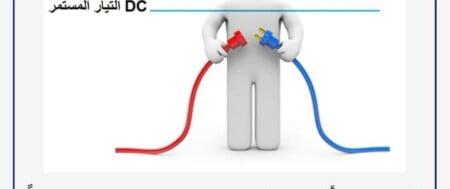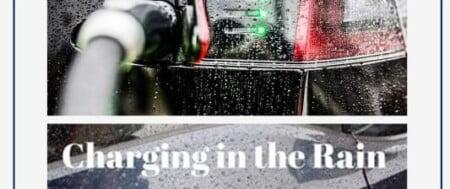all english artical in end
هل إستخدام النيتروجين مفيد فعلا فى الإطارات ؟؟
الإطارات واحدة من أهم مكونات السيارة، والتي تستلزم هندسة عالية وطرق فائقة التعقيد ومواد متعددة لصناعتها، على خلاف ما يظنه البعض، لذا يجب ملاحظتها ومتابعة الصيانة الدورية لها، ولضغط الهواء داخل تلك الإطارات مواصفات ومقاييس محددة، يجب الاهتمام بها وملاحظتها بشكل فوري.
ما الفرق بين الهواء العادي وغاز النيتروجين فيما يخص ملء الإطارات..
غاز النيتروجين، هو غاز خامل وهو ببساطة هواء جاف مجرّد من الأكسجين، لاتقتصر استعمالاته فقط على نفخ الإطارات الخاصة بسيارات السباق وعجلات الطائرات كما حدث في بداية استعمالاته، بل يستعمل في عدة صناعات كالتبريد والأسمدة والطب.
لايسخن ولا يتمدد
ويتميز غاز النيتروجين بأنه (( لايسخن ويتمدد )) كما يحدث للهواء العادي، لا يتأكسد مع المواد التي يصنع منها الإطار كالمطاط مثلما يحدث في الهواء العادي الذي يتأكسد معه بسرعة وبالتالي يتلف المطاط ويحدث انفجار داخل الإطار خاصة في فصل الصيف.
ضغط ثابت فى العجلات
نتيجة حجم جزيئات النيتروجين الأكبر من الأوكسجين، مما يخفف من نسبة تسرب الغاز فى المطاط ، يحافظ بذلك على الضغط داخلالعجلات.
وايضاً لا ينتج بخار الماء مثلما يحدث مع الهواء العادي وزياده حجم الهواء مع ارتفاع درجات الحرارة، ولذلك فإن ضغط العجلات المنفوخة بالنيتروجين أقل تأثراً بالحرارة أثناء القيادة.
تخفيض إستهلاك الطاقة
مع الحفاظ على درجة الضغط الملائمة فى العجلات فإنه يساهم فى تخفيض إستهلاك الطاقة ويوفر تحماً أفضل أثناء القيادة.
مع الحفاظ على درجة الضغط الملائمة يطيل من عمرها ويحضمن معدل إهترائها، حيث ان الضغط الزائد يسبب اهتراء المنطقة الوسطى من العجلة بصورة اسرع.
منع الصدأ
يتكون الصدأ بسبب الرطوبة والأوكسجين وتعرض حواف الإطار المعدنى الداخلية للصدأ، ولكن عند إستخدام النيتروجين لتعبئة العجلات تنخفض نسبة الاوكسجين الى اقل من 5% ومعها الرطوبة مما يحد بشكل كبير من حدوث الصدأ ويطيل من عمر الإطار.
أكثر أمناً فى الحوادث
غازغير قابل للإشتعال ولا يساعد فى عملية الإحتراق كما يفعل الأوكسجين، ولذلك فإن استخدام النيتروجين أكثر أمانا من استخدام الهواء المضغوط ويخفض من إحتمال إنفجار المركبة فى حالة وقوع الحوادث لا قدر الله وهو ما يفسر إقبال فرق السباقات على استخدام النتروجين فى تعبئة العجلات وكذلك شركات الطيران. كما أن غاز النيتروجين يقلل من حدوث “البالونة الجانبية” والتي تحدث عند انتفاخ الإطار من الجانب، نتيجة اصطدام الإطار بحفرة أو مطب.
الطريقة الصحيحة لتعبئة العجلات ؟
ينصح بضرورة الوصول إلى درجة نقاء لا تقل عن 95% للحصول على النتائج المذكورة، وذلك من خلال تفريغ العجلات من الهواء (حتى درجة 3 psi ) وإعادة تعبئتها والتكرار عدة مرات للوصةل إلى درجة النقاء المطلوبة
Is the use of nitrogen really useful in tires??
Tires are one of the most important components of the car, which requires high engineering, highly complex methods, and multiple materials to manufacture, contrary to what some think, so it must be observed and regular maintenance followed, and the air pressure inside those tires has specific specifications and standards, which must be taken care of and noticed immediately. What is the difference between regular air and nitrogen gas with regard to filling tires.. Nitrogen gas is an inert gas and is simply dry air deprived of oxygen. Its uses are not limited to inflating racing car tires and aircraft wheels, as happened at the beginning of its uses, but it is used in several industries such as refrigeration, fertilizers and medicine. Does not heat up or expand:
Nitrogen gas is characterized by the fact that it “does not heat up and expand” as it does with normal air. It does not oxidize with the materials from which the tire is made, such as rubber, as happens in normal air, which oxidizes with it quickly and thus damages the rubber and an explosion occurs inside the tire, especially in the summer. Constant pressure in wheels: As a result of the size of nitrogen molecules larger than oxygen, which reduces the percentage of gas leakage in the rubber, thus maintaining the pressure inside the wheels. Also, water vapor is not produced, as happens with normal air, and the air volume increases with higher temperatures, so the pressure of the wheels inflated with nitrogen is less affected by the heat while driving. Reducing energy consumption:
While maintaining the appropriate degree of pressure in the wheels, it contributes to reducing energy consumption and providing better handling while driving. While maintaining the appropriate degree of pressure, it extends its life and ensures its wear rate, as excessive pressure causes the middle area of the wheel to wear out faster. Rust prevention: Rust is formed due to moisture and oxygen, and the inner edges of the metal frame are exposed to rust, but when nitrogen is used to fill the wheels, the oxygen percentage drops to less than 5%, and with it moisture, which greatly reduces the occurrence of rust and extends the life of the tire. Safer in accidents
A gas that is not flammable and does not aid in the combustion process as does oxygen. Therefore, the use of nitrogen is safer than the use of compressed air and reduces the possibility of a vehicle exploding in the event of accidents, God forbid, which explains why racing teams use nitrogen to fill wheels, as well as airlines. Nitrogen gas also reduces the incidence of “side balloon”, which occurs when a tire inflates from the side, as a result of a tire hitting a pothole or bump. The correct way to fill the wheels? It is recommended to reach a purity of not less than 95% to obtain the mentioned results, by emptying the wheels of air (up to 3 psi) and refilling them and repeating several times to reach the required degree of purity.






